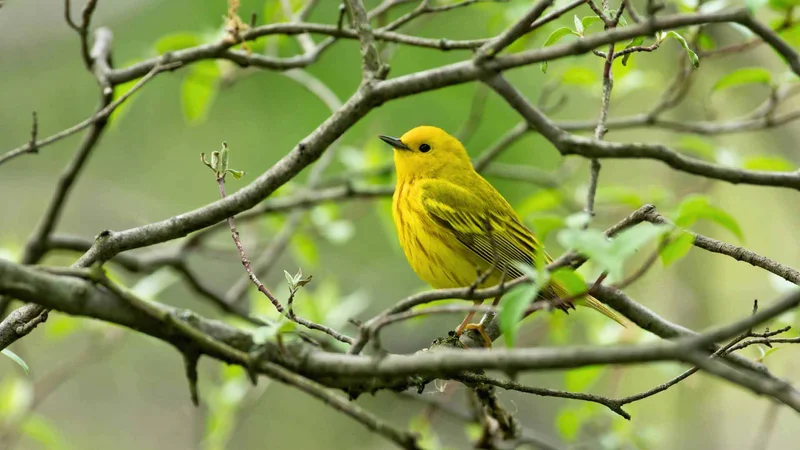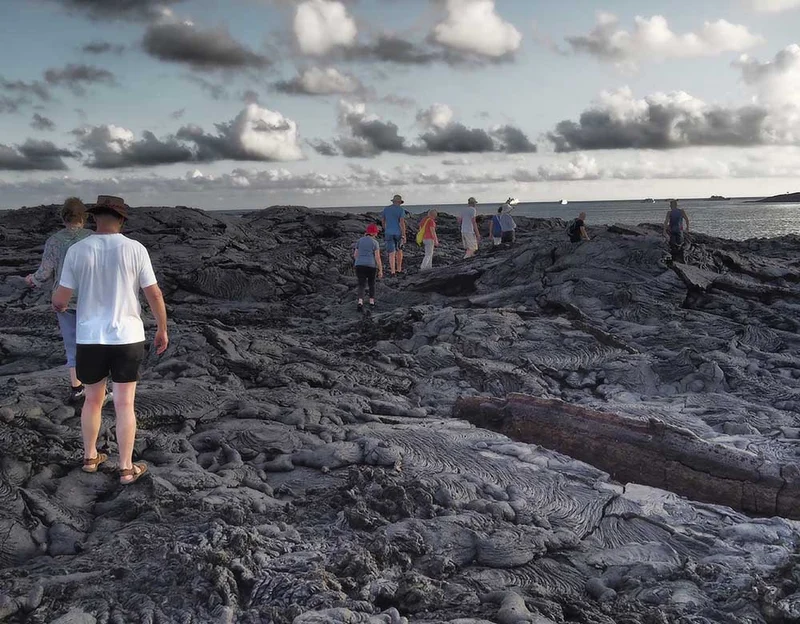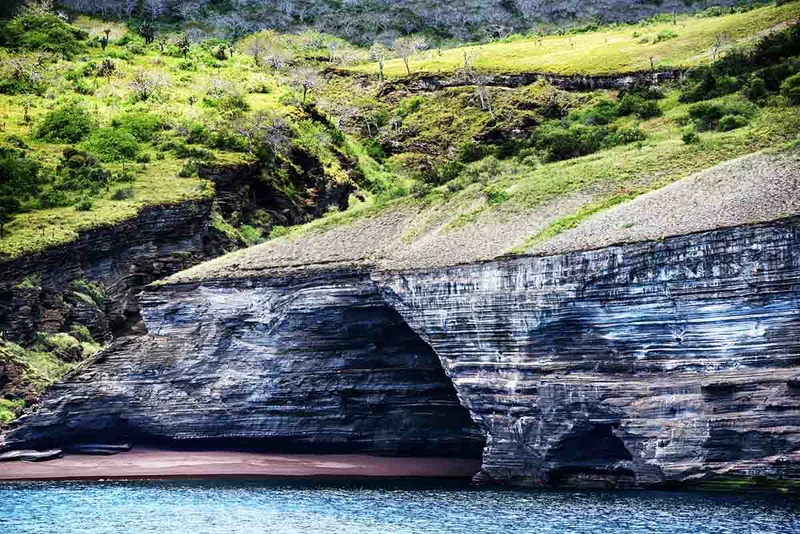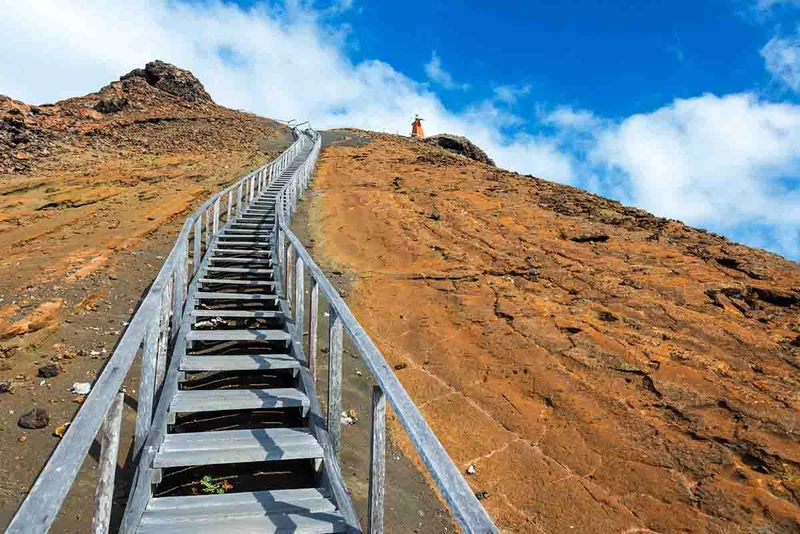
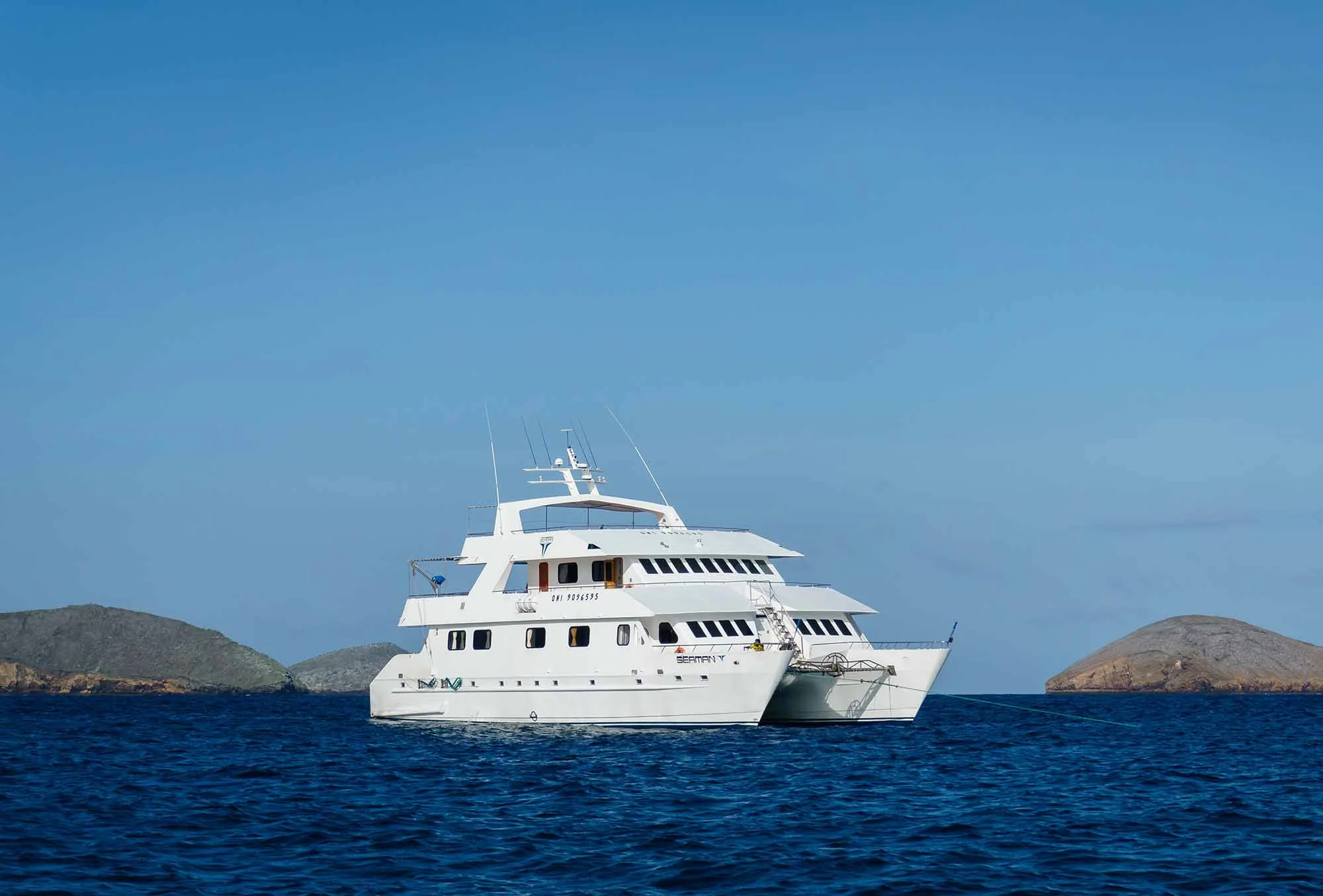
Explore the Galapagos Islands on an exciting 9-day itinerary. Each day, from the arrival in Santa Cruz through the marvels of Genovesa to the tranquil beaches of San Cristobal reveals the rich cultural and natural heritage of the archipelago. Explore unique locations, such as Bartolome Island and the Tortoise Breeding Center on San Cristobal. This journey celebrates the diversity of the Galapagos Islands while supporting conservation efforts.
9 Day Galapagos Itinerary
Day 1: Bartolome Island
AM: Journey to the Galapagos
Your flight into the Galapagos Islands begins today. According to the Galapagos Government's regulations, you will need a 20 USD migration control card.
At the airport in Santa Cruz passengers are subjected to an inspection. This is to ensure that no foreign animals or plants enter the island. The entrance fee to the Galapagos National Park is payable at this point. It will be $200 for international passengers, and $100 for those under 12.
Your guide will then assist you with the transfer of your luggage onto the bus. The CACatamaran Journey is reached by passengers via motorized boats known as Panga.
PM: Bartolome Island Exploration
Bartolome Island is located in Sullivan Bay and stands at 114m above sea level. It offers a vantage of one of the most beautiful landscapes of the Galapagos Islands. This stunning landscape includes lunar-like volcanic cones and craters as well as lava fields. The renowned Toba pinnacle was shaped by the ocean. The island has two beautiful beaches that are home to marine turtles. At the bottom of the pinnacle is a tiny colony of Galapagos Penguins.
Day 2: Mosquera Islet & North Seymour Island
AM: Mosquera Islet Exploration
Mosquera Islet, nestled between North Seymour Island and Baltra is one of the Galapagos' smallest and most unique islands. Its volcanic origins and its flat, geologically uplifted terrain are what make it so special.
It's the contrast in colors that makes this islet so captivating. The white beach is flanked by turquoise water, green foliage, and black lava rock. Mosquera is a great place for landscape photography, especially during golden hour sunrise or sunset.
PM: North Seymour Island Adventure
North Seymour Island is a volcanic island that has a flat, mostly rock-filled landscape. This island is home to a large population of majestic frigatebirds. In the more open areas you can watch the courtship dances of the blue-footed boobies, and the swallow-tailed geese gracefully perch along the cliff edge.
Sea lions are often seen hauling themselves out on the beach, and sometimes even bodysurfing. North Seymour is a destination that you must visit in Galapagos because of its unique combination of wildlife and coastline scenery.
Day 3: Genovesa Island: El Barranco & Darwin Bay
AM: El Barranco, The Cliff
El Barranco, a beautiful visitor's site on Genovesa Island is located in Darwin Bay. This 1.5-km trail on volcanic rocks offers an exciting two-hour trip through the youngest geological region of the island.
Storm Petrels nest in the lava-covered cliffs to the south. Watch two petrel species nesting within the holes and cavities of the lava while keeping an eye out for the main predator, the Short-Eared Owl. Nesting ground for the red-footed boby. This bird is unique to outer islands such as Punta Pitt (Floreana), Wolf Darwin and Genovesa. This island is also home to the masked booby. On "panga" rides along the cliffs you can see fur sea lions as well as various species of seabirds.
PM: Discovering Darwin Bay
Darwin Bay was formed when an island crater submerged below the sea level. This created a white sandy coral beach that is perfect for landings. The bay is a haven for birdwatchers. It allows them to observe a variety of species including red-footed and masked boobies, as well as lava gulls and whimbrels.
Red-Foots are nesting below the Mangroves as visitors make their way along the trail. Avid birdwatchers will enjoy seeing Galapagos gulls, Galapagos Doves and large ground and cactus finches. This trail ends at the edge of a cliff, providing a panoramic view over the island's vibrant ecosystem and its diverse birdlife.
Day 4: South Plazas Island & Santa Fe Island
AM: Explore South Plazas Island
South Plazas is located to the east Santa Cruz Island and forms part of Islas Plazas. Despite its small size, it hosts some of Galapagos' most unique and captivating species. The land iguanas of Plazas are much smaller than those found on the other islands.
On the island, there are several hybrid iguanas that resulted from crossbreeding between a male land iguana with a female marine iguana. These hybrids are distinguished by their gray/black coloration. They have the head and tail of the marine iguana, but the crest is that of the land iguana. Tunas, iguanas' favorite food source, are responsible for the abundance of these animals. Along the rugged cliffs you can see swallow-tailed seagulls nesting with other seabirds like Audubon Shearwaters and red-billed tropical birds.
PM: Santa Fe Island Discovery
Santa Fe Island is located in the southeast part of Galapagos. It has a flat, unique terrain that was formed by uplift and not volcanic activity. According to some theories, it is the oldest archipelago island. It is home to many endemic species including the Galapagos Hawk, Galapagos Snake, Galapagos Mockingbird, Rice Rats, and the one of two land iguana species in the Archipelago.
As you disembark, be sure to see one of many sea lion colonies. Salt bushes, giant prickly pears, and other giant plants are found along the trail, which demonstrates gigantism - a feature of oceanic isles. Santa Fe offers excellent snorkeling opportunities with vibrant tropical fish and playful sea lions in its clear waters.
Day 5: David Rodriguez Land Tortoise Breeding Centre & Gianni Arismendy Environmental Interpretation Centre
AM: A visit to the David Rodriguez Land Tortoise Breeding Centre
The Galapagos National Park Service established the Tortoise Breeding Centre in 2002, under the name Jacinto Gordillo. It was created for captive tortoise breeding and to provide care. The David Rodriguez Tortoise Breeding Centre was established in 2016 to honor David Rodriguez’s 39 years as a dedicated park ranger.
This breeding center can be reached by road. It is located in the Southeast of San Cristobal and approximately 22 km from Puerto Baquerizo Moreno. A 40-minute journey by bus will take you to Cerro Colorado. David Rodriguez Tortoise Breeding Centre's primary objective is to increase the number of giant tortoises on San Cristobal Island, specifically Chelonoides Chathamensis. The facility is designed to create an environment that closely mimics their natural habitat. This will contribute to conservation efforts, and promote sustainable tourism on San Cristobal Island.
PM: Gianni Arismendy Environmental Interpretation Centre
Explore the Gianni-Arismendy Environmental Interpretation Centre in the afternoon. It is a lush garden with breathtaking views of the ocean. The center is a knowledge repository on geological history, human history, conservation, and natural science. It is the oldest Natural History Museum in the Galapagos Islands and it's dedicated to the preservation of the archipelago. Seeing their conservation and research initiatives are not only inspiring but motivating.
Day 6: San Cristobal Island: Galapaguera & Cerro Brujo
AM: Exploration of Punta Pitt
Punta Pitt is located at the easternmost tip of San Cristobal Island. It has a 90 meter long beach, and several natural viewing points that overlook a tuff-covered volcanic hill. The trail named Oliviana leads visitors up to the top of the volcano, where they can see diverse lava forms.
This hill is a stunning example of a landscape that looks like it belongs in a sci-fi film. It was shaped by the relentless wind. Oliviana Beach, with its stunning olive-yellow color and crystals created by lava erosion and shells, is a favorite sunbathing area for sea lions. The spectacle is spectacular as seagulls, frigate birds and pelicans soar above.
Pitt Islet is a rare place where the three species of booby (blue footed, masked, and red-footed) coexist with both species frigate birds.
PM: Adventure on Lobos Island
Isla Lobos is a level, small island that gets its name because of the playful sea lions who playfully inhabit the beaches. Their brown fur contrasts with the white sand. It is accessible by boat in 20 minutes (10 km) from Puerto Baquerizo Moreno, on San Cristobal Island. The island has two piers that allow for diving and are accompanied by the sea lions.
A protected channel surrounds the island, providing an excellent snorkeling experience. The piers are connected by a scenic 850 meter path that offers a 1-hour stroll to view saltwater-tolerant vegetation. Its name is derived from the two species of sea lions that live there, namely Californian sea lions (also known as California sea lions) and fur seals originating in Antarctica with double-fur layers.
Day 7: Española Island: Osborn Islet, Gardner Bay & Suarez Point
AM: Gardner Bay
Gardner Bay, nestled along the north-east coast of Hood Island offers a tranquil setting to relax, swim, or kayak, while also allowing you the opportunity to see the charming sea lions. Sharks can be seen in the crystal clear waters, which adds an extra element of excitement to this coastal adventure.
Three species of Darwin Finches are found in this tranquil location:
- Subspecies of large-billed Cactus Finch (Geospiza Fuliginosa) with a bill that is similar to the terrestrial finch.
- Geospiza fuliginosa, the small-beaked Ground Finch
- A subspecies endemic of the singing finch, Certhidea Olivacea.
Birdwatchers will find plenty of opportunities to observe both resident and migrating birds in this region.
PM: Discovering Suarez Point
Suarez Point is a great place to observe blue-footed, Nazca, and albatrosses. It is located along the coast and offers an amazing view of the large waves albatrosses using the cliffs for launch pads. It is the spectacular blowhole that sends water to heights between 50 and 75 meters. The spectacle is not just a sight to behold, but it also provides excellent photographic opportunities.
Day 8: Floreana Island: Cormorant Point, Champion Islet, Post Office Bay & Baroness Lookout
AM: Exploration of Cormorant Point and Champion Islet
Cormorant Point is a spectacular site. It boasts arguably the best flamingo lagoon in the Galapagos, and ranks among the biggest islands. The area is surrounded by two tuff cones and exudes an unique aura. Visitors can also enjoy the sight of a variety of shorebird species, such as white-cheeked Pintail Ducks and common Stilts. The unique beaches of the site, including "The Green Beach", which is characterized by the presence of high levels of olivine in the sand, and "The Flour Sand Beach", made of corals, contribute to its fascinating landscape.
After the fascinating walk, we continue to Champion Islet. This is a great place for snorkeling, and to explore the underwater world. Coral reefs nearby are home to sea turtles, fish, and even sea lions.
PM: Visit to Post Office Bay
Post Office Bay, a historically significant bay in the area, is where a crew from an 18th century whaling vessel placed a barrel of wood. Mariners, tourists, and others have used it to post letters, postcards, or other items. This area was also the landing place for the early colonists. Post Office Bay is a great place to spend an afternoon admiring the beauty of the Galapagos Islands and its beach.
Day 9: Fausto Llerena Nurturing Centre
AM: Fausto Llerena Breeding Centre Experience
Fausto Llerena's Breeding Centre, located in the Galapagos National Park along Charles Darwin Avenue and just 1 km away from the Gus Angermeyer tourist pier, is an important attraction that forms part of Charles Darwin Foundation network of visitor site. This fascinating center is a 40-minute stroll from the Gus Angermeyer Tourist Pier.
Start your journey at the Galapagos National Park Service's (SPNG) information desk. The breeding centre is reached by following a path that leads through the Van Straelen interpretation Centre. A circular elevated wooden path offers panoramic views of Lonesome George, the native tortoises on Espanola Island, and other species. This path ends at the corral of tortoises, which offers a complete and educational experience to all visitors.
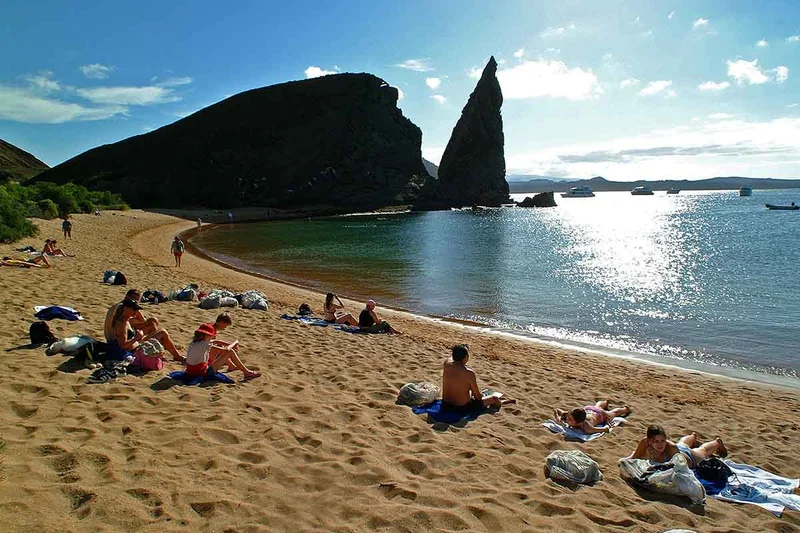
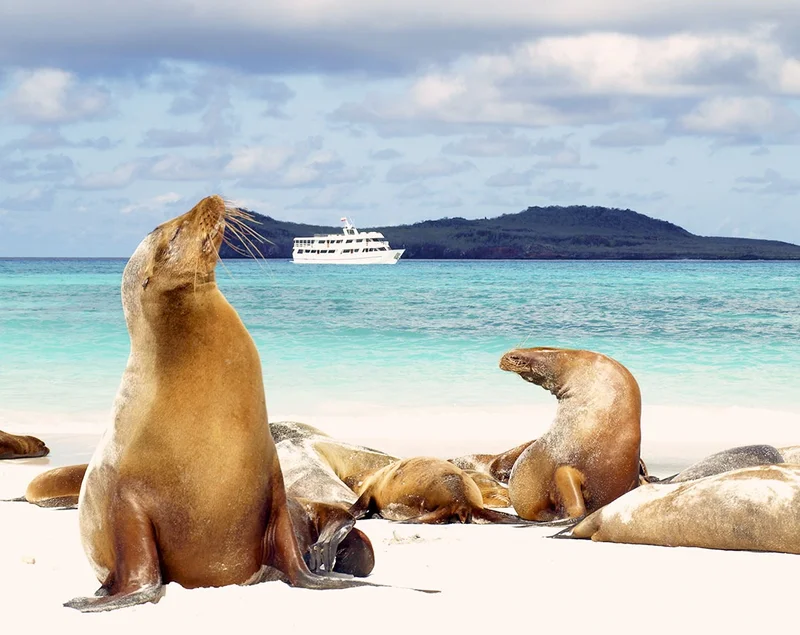
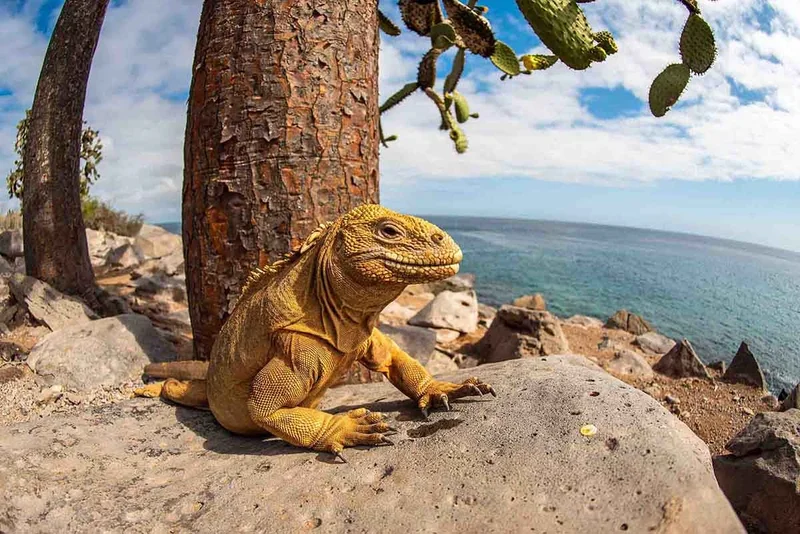
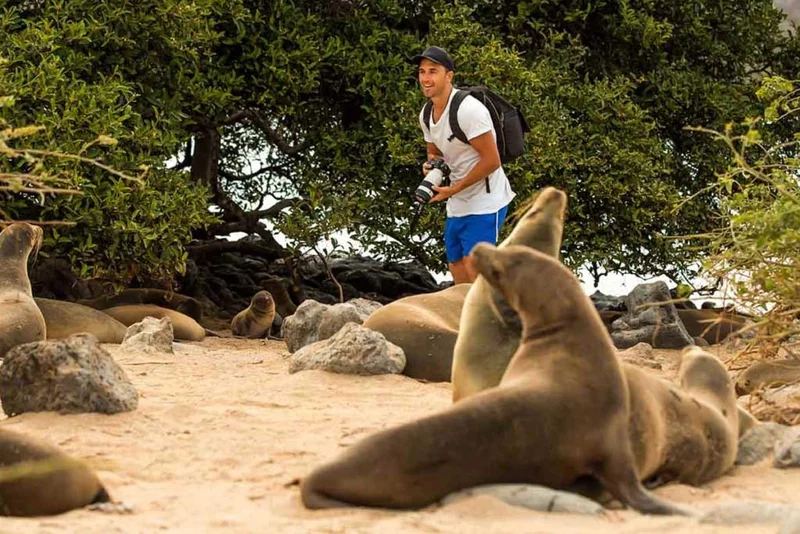
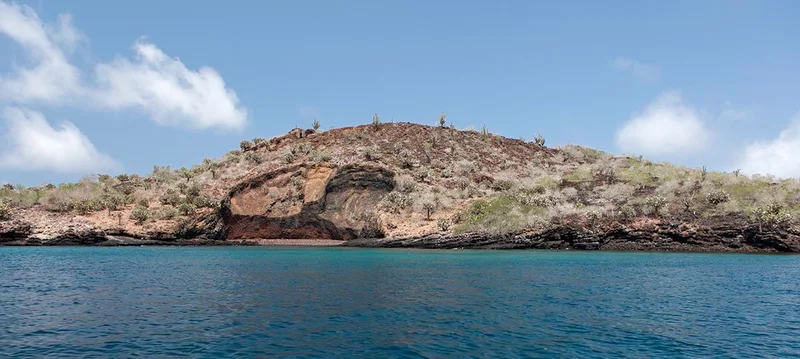
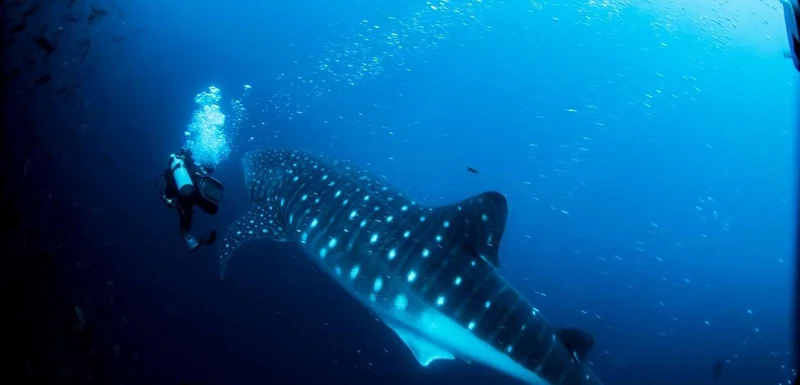
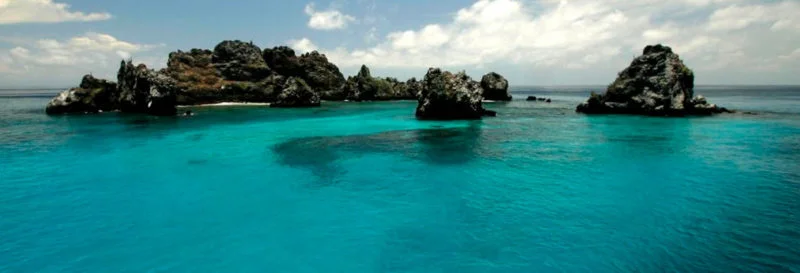
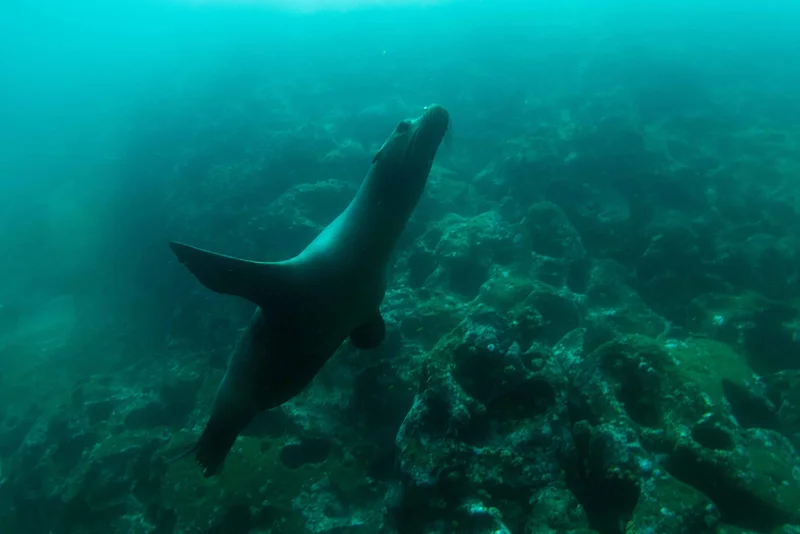
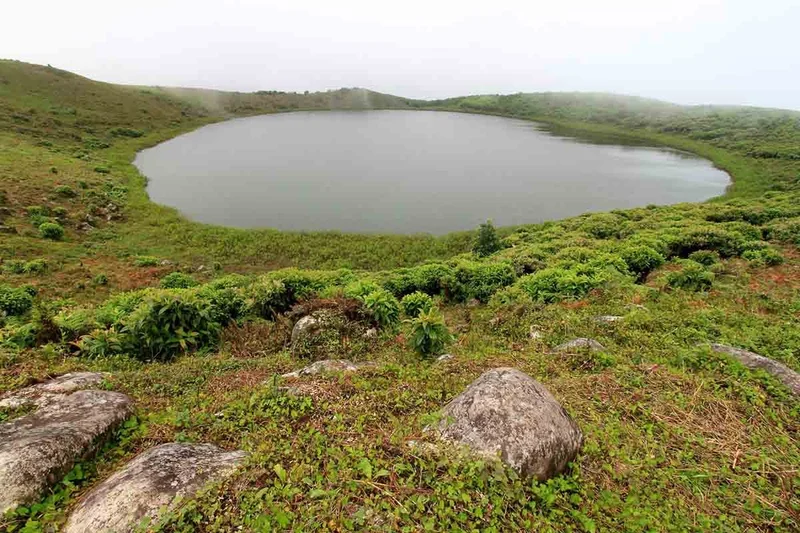
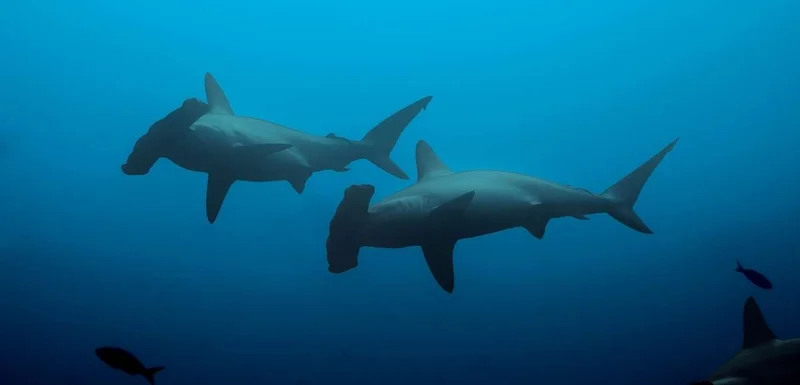
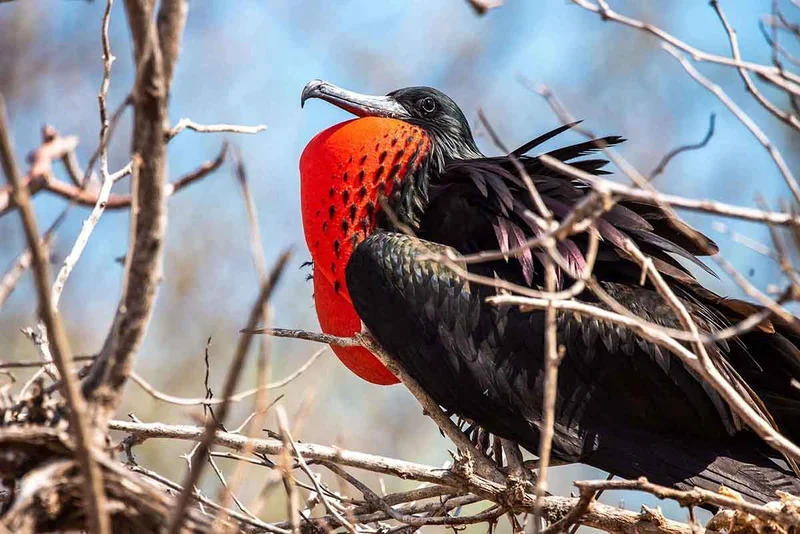
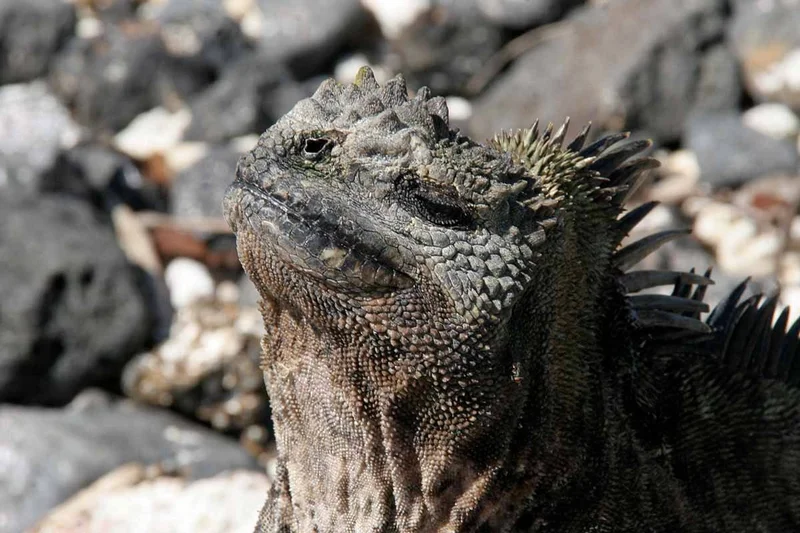
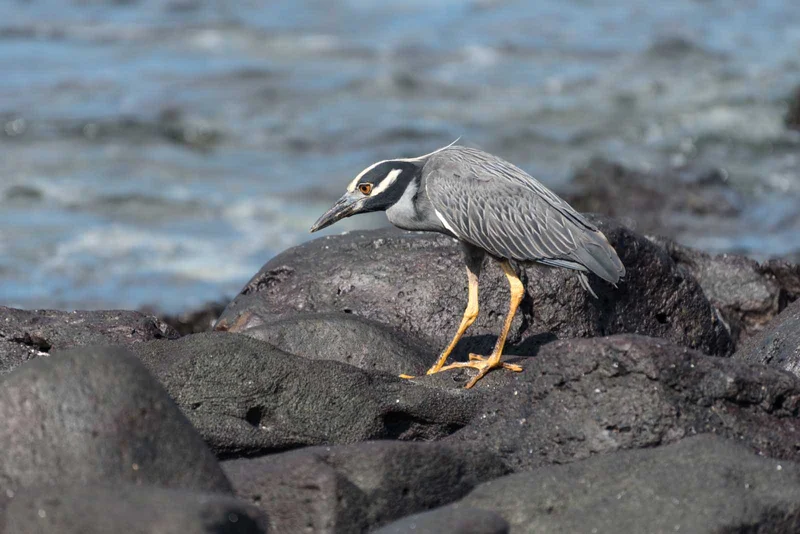
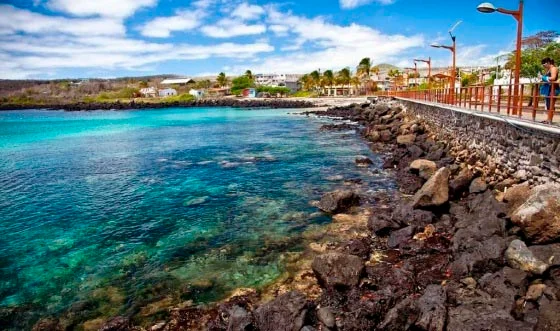
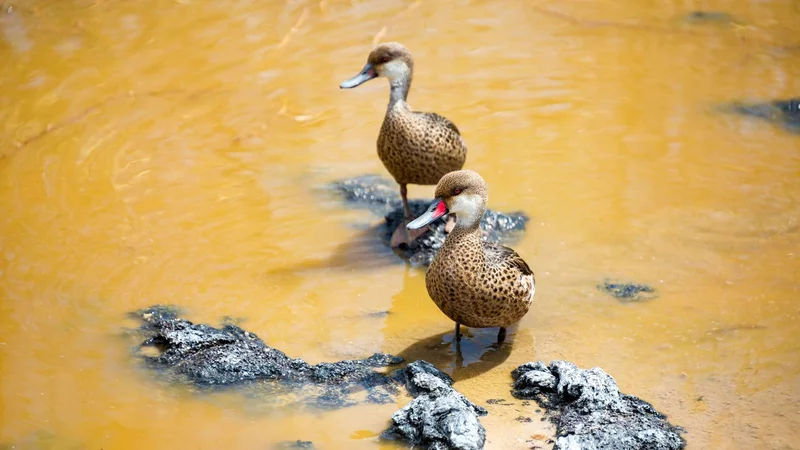
9 Day Galapagos Itinerary Includes
- All programed visits as per itinerary with specialized naturalist bilingual guide
- Accommodation in twin/double cabin with private facilities (surcharge for suite)
- All meals on board, drinking purified water, coffee and tea
- Snorkeling equipment (fins, mask & snorkel) & sea-kayaks
- Transfers within the islands on cruise dates as per itinerary
- Personalized 24/7 assistance during tour
9 Day Galapagos Itinerary Does not Include
- Airfare to/from Galapagos from/to Mainland Ecuador (to be added)
- Galapagos National Park Entrance Fee US$200 per person (in cash only upon arrival)
- Galapagos Migration Card US$20 in cash per person (at Mainland’s Airport)
- Alcoholic/soft drinks, personal expenses, extras, and tips
- All sizes wet-suits for rent on board (in cash)
- Travel, medical & cancelation Insurance and any services on Mainland
- Other services not specified in the program
9 Day Galapagos Itinerary Highlights
- Breeding and care of giant tortoises in captivity, promoting conservation and tourism.
- Birdwatching with various species, including red-footed boobies, masked boobies, and more.
- Stunning landscapes, volcanic cones, lava fields, and Galapagos penguins.
- Spot blue-footed boobies, albatrosses, and Nazca boobies, witness the magnificent blowhole.
- Enjoy snorkeling with sea turtles, sea lions, and vibrant underwater wildlife.
- Best flamingo lagoon, unique beaches, and diverse shorebirds.
Itinerary Map
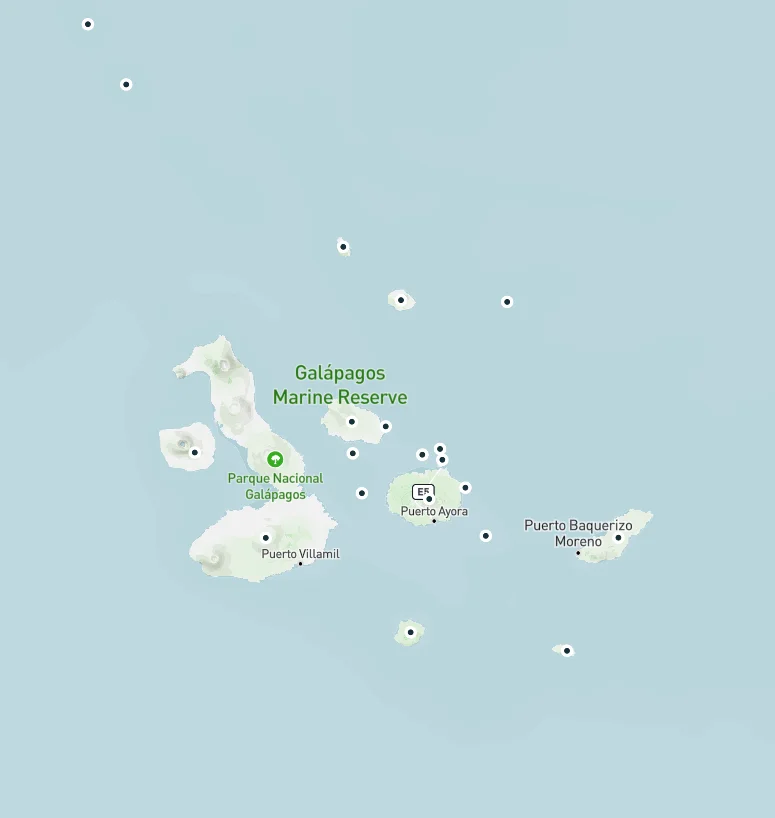
Reviews
Animals you might see on this itinerary:
More information about the Galapagos Islands you visit in this 9 day itinerary:
Enchanted Galapagos Northern and Southern Islands Cruise - Seaman Journey Catamaran
Why travel with us?
Similar Itineraries
